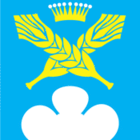Sangaste
| Sangaste | |||
|
|||
| State : |
|
||
| Circle : |
|
||
| Coordinates : | 57 ° 56 ' N , 26 ° 19' E | ||
| Area : | 144.7 km² | ||
| Residents : | 1,489 (2006) | ||
| Population density : | 10 inhabitants per km² | ||
| Time zone : | EET (UTC + 2) | ||
| Community type: | Former rural community | ||
| Website : | |||

|
|||
Sangaste (German: Sagnitz = castle / manor; Theal = former parish ) is a former rural community in the Estonian district of Valga with an area of 144.7 km². It had 1,489 inhabitants (January 1, 2006). In 2017 Sangaste merged with the rural municipality of Otepää and parts of the rural municipality of Palupera to form the rural municipality of Otepää.
In addition to the main town Sangaste, the community included the villages of Ädu, Keeni, Kurevere, Lauküla, Lossiküla, Mäeküla, Mägiste, Pringi, Restu, Risttee, Sarapuu, Tiidu and Vaalu.
Sangaste was first mentioned in 1272 under the name Toyvel . The Sagnitz manor, founded in 1287, gave the community its current name.
Sagnitz Castle
Sagnitz Castle ( Estonian : Sangaste mõis) is one of the most important examples of Neo-Gothic in the Baltic States. The current building was built from 1879 to 1883 according to plans by Otto Pius Hippius in the neo-Gothic style with influences from the New Tudor style . Some parts of the original interior have been preserved to this day. The castle was unusually modern and had central heating, telephones from 1896 and electric light from 1907.
Sons and daughters of the church
- Carl Immanuel Philipp Hesse (1875–1918), German-Baltic pastor and Protestant martyr
Web links
- Sangaste Municipality website (Estonian)
- Sangaste Castle (Estonian and English)
- Interactive map (Estonian, "otsi" means "search")
literature
- Sabine Bock : Manor houses in Estonia | Mõisad Eestis. A brief overview of the development of their forms and their history. Lühike ülevaade ajaloost ja ehitusvormide arengust. Thomas Helms Verlag Schwerin 2020, ISBN 978-3-944033-29-7 , pp. 82–83 [1]


